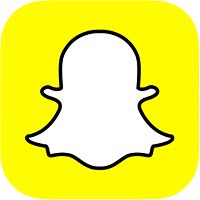Snapchat
From DigitalRhetoricCollaborative
History
Snapchat was first launched in July 2011 as Picaboo, the name was shortly rebranded as Snapchat during the same year. In 2012 the application was released on Android devices shortly followed by an Apple ISO release.[3] The application quickly grew in popularity and by late 2013 the first major update to the application was launched. The update enhanced the speed and design of the application allowing for swipe navigation, double-tap reply option for users and an improved friend finder - creating a more fluid interface. [4] In early 2013 the application launched another update that enabled users to send and alter video snaps and added a text message feature which allowed users to correspond both privately and publicly. The next update introduced the My Story feature of the application which allowed users to post snaps that could be viewed by their whole network instead of single selected friends. Today the application includes features such as customizable text, geo flitters and photo filters multi-color drawing modes that allow the user to interact with their environment and then disseminate that information to a mass of people or a selected individual.

